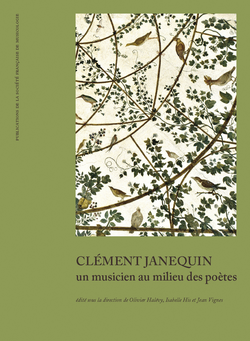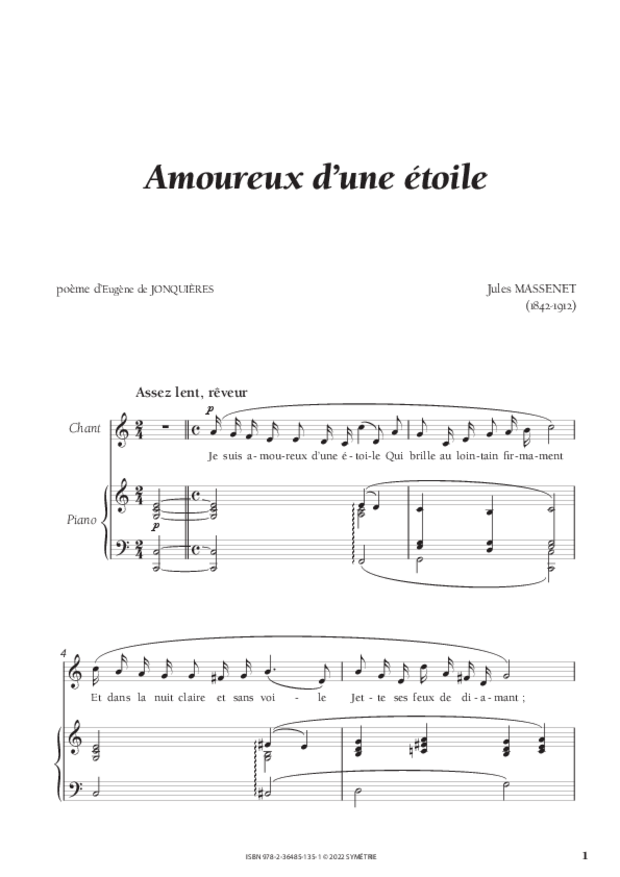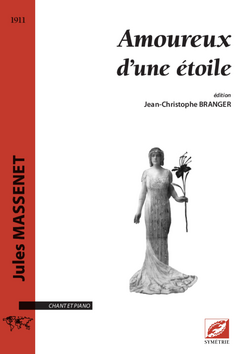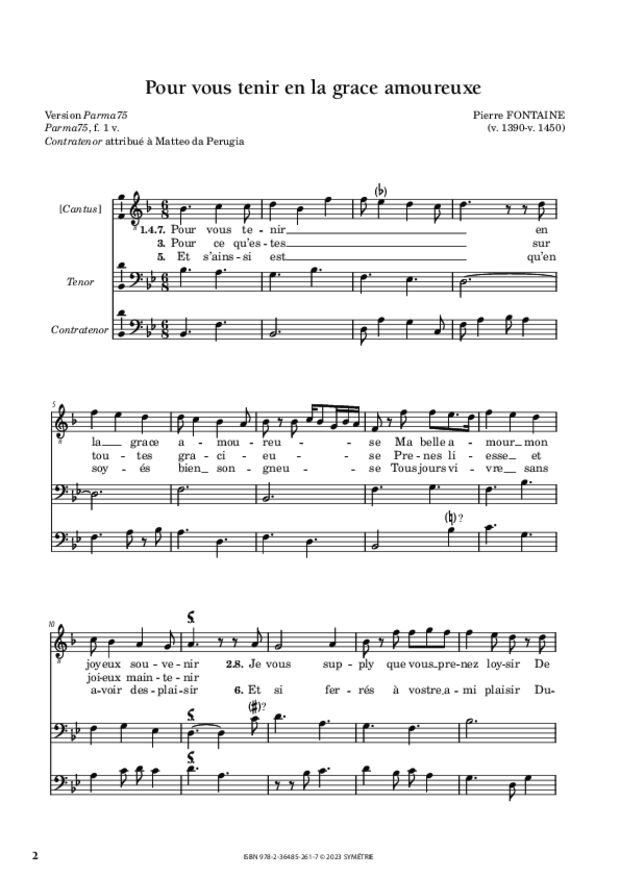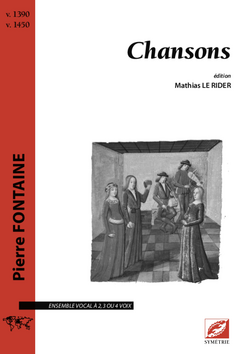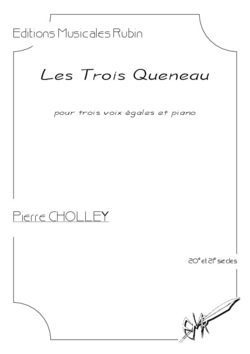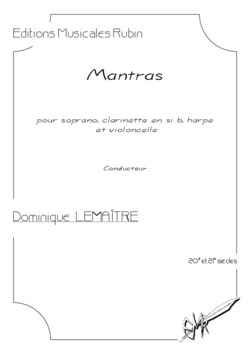Why publish, in our day and age, a tutor for medieval solfeggio? The question may justifiably be asked. Can one imagine, then, a pianist for example, dedicating him or herself to the repertoire of Romantic music without a sound grasp of the rudimentary knowledge of the solfeggio during that period? This is, nevertheless, the case of many performers of medieval music. Faced with a dearth of pedagogical tools, they have hardly had any possibility to study solmization, modality, notation, musica ficta, counterpoint and prosody thoroughly and in a sufficiently detailed manner.
The aim of this tutor, then, is simply to enable all those musicians, amateur or profes-sional, who are interested in medieval music, to acquire through a series of practical exercises taken from the main treatises dating from the 13th, 14th and 15th centuries, the basis of solfeggio necessary for a historically informed approach — as we say nowadays — to three centuries of European music. The study of the source material of music theory of this period shows an extremely consistent presentation of the teaching methods of this discipline which proves that, if the style of composi-tion evolved indeed considerably in three centuries, the fundamentals of solmization remained the same. These exercises are transcribed in their original notation from which one may solmizate either at sight or, alternatively, using the accompanying analytical tables along with the recording, performed by the singers of the Musica Nova ensemble, which provide working examples. They are preceded by a clear and concise commentary on the theoretical explanations necessary for an understanding of Guido d’Arezzo’s method and completed by several musical examples. The idea is, then, to permit the restitution of these repertoires in the most plausible way possible — the search for authenticity itself being nothing less than utopian — by building on the knowledge brought to us by research.
Musica Nova
Based in Lyon, the early music ensemble Musica Nova is comprised of singers spe-cialised in the repertoires of polyphonic music and gathered around Lucien Kandel, teacher at the Geneva High School for Music. Their unfailing interest for research into theory and practical musicology produces unexampled performances on account of their sonorities hitherto quite literally unheard.
In consequence, the ensemble works only with the original sources or diplomatic transcriptions of those sources made by its members — when, for example, the sources themselves are in a bad state of repair — excluding any and all recourse to transcription into modern notation. Taking into consideration the absence of direct transmission of these very early repertoires, all their fundamental parameters, to wit, rhythmic notation, solmization, addition of musica ficta, pronunciation and prosody are all taken into account so as to establish a musical text that is as correct as possible.
This original approach has given rise to several recordings of the monuments of medieval and renaissance polyphony: the mass by Guillaume de Machaut, the Missa Cuiusvis Toni and the Missa Prolationum by Johannes Ockeghem, as well as a number of Chansons by Josquin des Prez and not forgetting the world premiere of 2019, in the Papal Palace in Avignon, of the famous Barcelona Mass (14th century). This recording of the exercises in the present didactic work is therefore simply the logical continuation of the long collaboration with Gérard Geay.
Precisions
Sound recording by Philippe Gonneaud, 2021
This book is in French.
Sounds
All exercises were recorded by signers of the ensemble Musica Nova de Lyon. The sound streaming is available through a QR-code printed in the book. As an excerpt, here is the exercise 6-3:
Quatrième lieu sur f fa ut ; deuxième pour muer de ♭ à nature
Exercice 6-3. Quatrième lieu sur f fa ut ; deuxième pour muer de ♭ à nature
Thierry Péteau, voice
Recording Philippe Gonneaud ©2021.
Table of contents
-
Avant-propos – Obstacles à la connaissance de la musique ancienne ?1
Jean-Yves Haymoz
-
Préface
- Remerciements9
- Les chanteuses et chanteurs de l’Ensemble Musica Nova9
- Quelques informations pratiques9
-
chapitre 1 – L’échelle musicale et la solmisation
- L’échelle musicale11
- La solmisation guidonienne13
- La main guidonienne18
- La deduccio21
-
chapitre 2 – Les quatorze lieux de muance
- Les traités28
- Le rythme et la notation28
- Les tessitures29
- La mutatio ou muance29
-
chapitre 3 – Premier lieu sur C fa ut
- Introductio musice de Jean de Garlande (vers 1270-1320)33
- Lucidarium de Marchettus de Padua (1317-1318)34
- Le manuscrit de Berkeley (Paris, 1375)36
- Declaratio musicae disciplinae d’Ugolino d’Orvieto (vers 1380-1457)36
- Johannes von Szydlow (xve siècle)37
- Practica musice de Franchinus Gaffurius (1451-1522)38
-
chapitre 4 – Deuxième lieu sur D sol re
- Introductio musice de Jean de Garlande (vers 1270-1320)39
- Lucidarium de Marchettus de Padua (1317-1318)40
- Le manuscrit de Berkeley (Paris, 1375)40
- Declaratio musicae disciplinae d’Ugolino d’Orvieto (vers 1380-1457)41
- Johannes von Szydlow (xve siècle)41
- Practica musicae de Franchinus Gaffurius (1451-1522)41
-
chapitre 5 – Troisième lieu sur E la mi
- Introductio musice de Jean de Garlande (vers 1270-1320)42
- Lucidarium de Marchettus des Padua (1317-1318)43
- Le manuscrit de Berkeley (Paris, 1375)43
- Declaratio musicae disciplinae d’Ugolino d’Orvieto (vers 1380-1457)44
- Johannes von Szydlow (xve siècle)44
- Practica musicae de Franchinus Gaffurius (1451-1522)44
-
chapitre 6 – Quatrième lieu sur F fa ut
- Introductio musice de Jean de Garlande (vers 1270-1320)45
- Lucidarium de Marchettus de Padua (1317-1318)45
- Le manuscrit de Berkeley (Paris, 1375)46
- Declaratio musicæ disciplinæ d’Ugolino d’Orvieto (vers 1380-1457)47
- Johannes von Szydlow (xve siècle)48
- Practica musice de Franchinus Gaffurius (1451-1522)49
-
chapitre 7 – Cinquième lieu sur G sol re ut
- Introductio musice de Jean de Garlande (vers 1270-1320)50
- Lucidarium de Marchettus de Padua (1317-1318)53
- Le manuscrit de Berkeley (Paris, 1375)56
- Declaratio musicæ disciplinæ d’Ugolino d’Orvieto (vers 1380-1457)58
- Johannes von Szydlow (xve siècle)61
- Practica musice de Franchinus Gaffurius (1451-1522)62
-
chapitre 8 – Sixième lieu sur a la mi re
- Introductio musice de Jean de Garlande (vers 1270-1320)65
- Lucidarium de Marchettus de Padua (1317-1318)67
- Le manuscrit de Berkeley (Paris, 1375)68
- Declaratio musicæ disciplinæ d’Ugolino d’Orvieto (vers 1380-1457)70
- Johannes von Szydlow (xve siècle)71
- Practica musice de Franchinus Gaffurius (1451-1522)72
-
chapitre 9 – Septième lieu sur c sol fa ut
- Introductio musice de Jean de Garlande (vers 1270-1320)73
- Lucidarium de Marchettus de Padua (1317-1318)75
- Le manuscrit de Berkeley (Paris, 1375)77
- Declaratio musicæ disciplinæ d’Ugolino d’Orvieto (vers 1380-1457)79
- Johannes von Szydlow (xve siècle)81
- Practica musice de Franchinus Gaffurius (1451-1522)81
-
chapitre 10 – Huitième lieu sur d la sol re
- Introductio musice de Jean de Garlande (vers 1270-1320)87
- Lucidarium de Marchettus de Padua (1317-1318)89
- Le manuscrit de Berkeley (Paris, 1375)90
- Declaratio musicæ disciplinæ d’Ugolino d’Orvieto (vers 1380-1457)92
- Johannes von Szydlow (xve siècle)94
- Practica musice de Franchinus Gaffurius (1451-1522)96
-
chapitre 11 – Neuvième lieu sur e la mi
- Introductio musice de Jean de Garlande (vers 1270-1320)97
- Lucidarium de Marchettus de Padua (1317-1318)97
- Le manuscrit de Berkeley (Paris, 1375)98
- Declaratio musicæ disciplinæ d’Ugolino d’Orvieto (vers 1380-1457)99
- Johannes von Szydlow (xve siècle)99
- Practica musice de Franchinus Gaffurius (1451-1522)99
-
chapitre 12– Dixième lieu sur f fa ut
- Introductio musice de Jean de Garlande (vers 1270-1320)100
- Lucidarium de Marchettus de Padua (1317-1318)100
- Le manuscrit de Berkeley (Paris, 1375)101
- Declaratio musicæ disciplinæ d’Ugolino d’Orvieto (vers 1380-1457)101
- Johannes von Szydlow (xve siècle)102
- Practica musice de Franchinus Gaffurius (1451-1522)102
-
chapitre 13– Onzième lieu sur g sol re ut
- Introductio musice de Jean de Garlande (vers 1270-1320)103
- Lucidarium de Marchettus de Padua (1317-1318)103
- Le manuscrit de Berkeley (Paris, 1375)105
- Declaratio musicæ disciplinæ d’Ugolino d’Orvieto (vers 1380-1457)107
- Johannes von Szydlow (xve siècle)110
- Practica musice de Franchinus Gaffurius (1451-1522)111
-
chapitre 14– Douzième lieu sur aa la mi re
- Introductio musice de Jean de Garlande (vers 1270-1320)112
- Lucidarium de Marchettus de Padua (1317-1318)112
- Le manuscrit de Berkeley (Paris, 1375)114
- Declaratio musicæ disciplinæ d’Ugolino d’Orvieto (vers 1380-1457)116
- Johannes von Szydlow (xve siècle)118
- Practica musice de Franchinus Gaffurius (1451-1522)119
-
chapitre 15 – Treizième lieu sur cc sol fa
- Introductio musice de Jean de Garlande (vers 1270-1320)120
- Lucidarium de Marchettus de Padua (1317-1318)121
- Le manuscrit de Berkeley (Paris, 1375)121
- Declaratio musicæ disciplinæ d’Ugolino d’Orvieto (vers 1380-1457)123
- Johannes von Szydlow (xve siècle)123
- Practica musice de Franchinus Gaffurius (1451-1522)123
-
chapitre 16 – Quatorzième lieu sur dd la sol
- Introductio musice de Jean de Garlande (vers 1270-1320)124
- Lucidarium de Marchettus de Padua (1317-1318)125
- Le manuscrit de Berkeley (Paris, 1375)125
- Declaratio musicæ disciplinæ d’Ugolino d’Orvieto (vers 1380-1457)126
- Johannes von Szydlow (xve siècle)127
- Practica musice de Franchinus Gaffurius (1451-1522)127
-
chapitre 17 – La solmisation des intervalles
- Disiuncta (disjonction)128
- Les muances virtuelles128
- Les intervalles en musica recta130
- Tractatus de musica de Jérôme de Moravia (c. 1240-c. 1304)139
- Tractatus de consonantiis musicalibus de Jacques de Liège (c. 1260-après 1330)141
- Palma choralis de Johannes de Olomons (c. 1380-après 1443)146
- La solmisation des « disjonctions notables » du manuscrit de Berkeley150
-
chapitre 18 – La solmisation des huit tons ecclésiastiques
- Les trois espèces de tétracordes et la constitution des huit tons ecclésiastiques152
- La corde de récitation158
- La solmisation des huit tons ecclésiastiques159
- Le De musica cum tonario d’Affligemensis (c. 1053-c. 1121)161
- Comment solmiser les huit exemples du De musica cum tonario d’Affligemensis163
- Quelques ouvrages mentionnés par Jean-Yves Haymoz163
-
chapitre 19 – Musica ficta, causa necessitatis et causa pulchritudinis
- Définitions de la falsa musica_165
- Causa necessitatis166
- Causa pulchritudinis et minor distantia173
- Le Lucidarium de Marchettus de Padua (1317-1318)174
- Application de la musica ficta dans le refrain de la ballade d’Andrieu179
-
chapitre 20– La solmisation de la musica ficta
- Le ♯ mi ou ♭ mi en musica ficta180
- Le ♭ fa en musica ficta181
- Le Tractatus de musica de Jérôme de Moravie183
- La solmisation de la musica ficta184
- Les 10 hexacordes per coniunctas dans Berkeley185
- Les 11 hexacordes per coniunctas de la musica ficta193
- Comparaison des conjointes du manuscrit de Berkeley – avec celles de Johannes Valendrinus et Dionysius de Ryckel194
- Les trois espèces de quartes et les quatre espèces de quintes d’après Gaffurius196
- Le Graduale Giuntino (1499-1500)198

